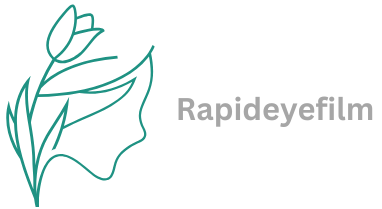Table of Contents
ToggleIn a world where communication is key, multilingual families are like a linguistic buffet—offering a delightful mix of flavors and cultures. Imagine a dinner table where kids switch from English to Spanish to Mandarin faster than you can say “What’s for dinner?” These families don’t just speak multiple languages; they create a vibrant tapestry of experiences that enrich their lives and broaden their horizons.
Understanding Multilingual Families
Multilingual families embody a vibrant blend of languages and cultures. They create environments where children gain valuable linguistic skills and cultural awareness.
Definition and Characteristics
Multilingual families consist of individuals who communicate in two or more languages. Each member may speak different languages, leading to diverse linguistic interactions. Common scenarios involve parents using their native languages while children adapt to their surroundings. In these families, language usage varies by context, with some members favoring one language at home and another in social settings. Language switching enhances adaptability, reflecting the dynamic nature of multilingual households.
Benefits of Multilingualism
Multilingualism offers numerous advantages to children in these families. Cognitive flexibility improves as children learn to navigate different linguistic systems. Enhanced problem-solving skills emerge through exposure to various perspectives. Academic performance often benefits, with research indicating that multilingual students tend to excel in standardized testing. Social benefits arise as well, including increased empathy and better communication abilities. Multilingual individuals find it easier to connect with people from diverse backgrounds, fostering strong relationships.
Challenges Faced by Multilingual Families
Multilingual families encounter distinct challenges that can impact language development and cultural identity.
Language Maintenance
Language maintenance proves challenging for multilingual families. Parents often worry that their children may lose proficiency in their heritage languages. Regular practice is essential, and consistency in language exposure can vary significantly. Efforts to incorporate the minority language into daily life enhance language retention. Activities like reading books, singing songs, or engaging in conversation in the target language strengthen language skills. Additionally, limited access to resources, such as educational materials in minority languages, presents another hurdle. Children need encouragement to use their heritage language, particularly in social settings.
Cultural Identity
Cultural identity can be complex for individuals in multilingual families. Navigating multiple cultures fosters challenges in forming a unified identity. Family members may experience pressure to conform to the dominant culture, causing internal conflicts. Deciding which cultural traditions to uphold becomes essential for maintaining a sense of belonging. Exposure to diverse cultural practices enriches family life, but it can also lead to confusion regarding identity. Celebrating cultural holidays and traditions reinforces pride in one’s heritage. These shared experiences create a stronger family bond while helping children embrace their multifaceted identities.
Strategies for Supporting Multilingualism
Supporting multilingualism involves practical strategies that nurture language development and cultural ties. Parents play a crucial role in creating a language-rich environment at home.
Encouraging Language Use at Home
Establishing language routines strengthens proficiency. Designating specific times for each language enhances practice. Reading stories in different languages builds vocabulary and comprehension. Engaging in daily conversations encourages children to express themselves freely. Playing games that involve multiple languages adds fun to learning. Encourage siblings to practice together, fostering natural interactions. Incorporating songs in various languages helps with pronunciation and rhythm.
Resources for Multilingual Education
Utilizing various resources boosts language learning. Libraries often offer bilingual books and storytelling sessions. Online platforms feature interactive language games and videos. Community centers may host multilingual classes or cultural events. Language exchange programs provide opportunities for authentic conversation practice. Parents can also connect with other multilingual families to share strategies and experiences. Educational apps often support learning through engaging activities tailored to children’s interests.
Success Stories of Multilingual Families
Many multilingual families share inspiring experiences that highlight the advantages of raising children in a bilingual or multilingual environment. One particular family exemplifies this success; they effectively incorporate English, Spanish, and Mandarin into their daily routines. Their children demonstrate impressive proficiency in all three languages, allowing them to communicate fluently with relatives across different cultural backgrounds.
Another family’s commitment to maintaining their heritage language pays off significantly. They actively celebrate cultural traditions through storytelling and cooking traditional dishes. Their children feel a strong connection to their roots, fostering pride in their multicultural identity.
Community engagement often contributes to the success of multilingual families. Some families participate in local language clubs, connecting with other multilingual households. These groups provide opportunities for children to practice their language skills in interactive settings, leading to enhanced socialization and language maintenance.
One family implemented a unique language routine by dedicating certain days of the week to each language. This approach allowed their children to immerse themselves fully in each language without pressure. The result proved beneficial, as the children gained confidence in using their languages in various contexts.
Furthermore, many families see academic benefits stemming from multilingualism. Students from these households tend to excel in language-related subjects and develop keen critical thinking skills. Research supports this correlation, highlighting how multilingual individuals possess enhanced cognitive flexibility that positively impacts learning.
Overall, the stories of these multilingual families showcase the myriad benefits gained from embracing diverse languages and cultures. The shared experiences demonstrate that with dedication and support, families can thrive in a multilingual environment, enriching their lives and the lives of those around them.
Embracing multilingualism enriches family life in countless ways. The blend of languages and cultures enhances children’s cognitive abilities and social skills while fostering a deep sense of identity. By navigating the challenges of language maintenance and cultural integration, families can create a vibrant environment that celebrates diversity.
Practical strategies and community support play essential roles in nurturing language development. As families share their experiences and successes, they contribute to a growing understanding of the benefits of multilingualism. Through dedication and creativity, multilingual families can thrive and ensure their children enjoy the advantages of being raised in a rich linguistic landscape.




